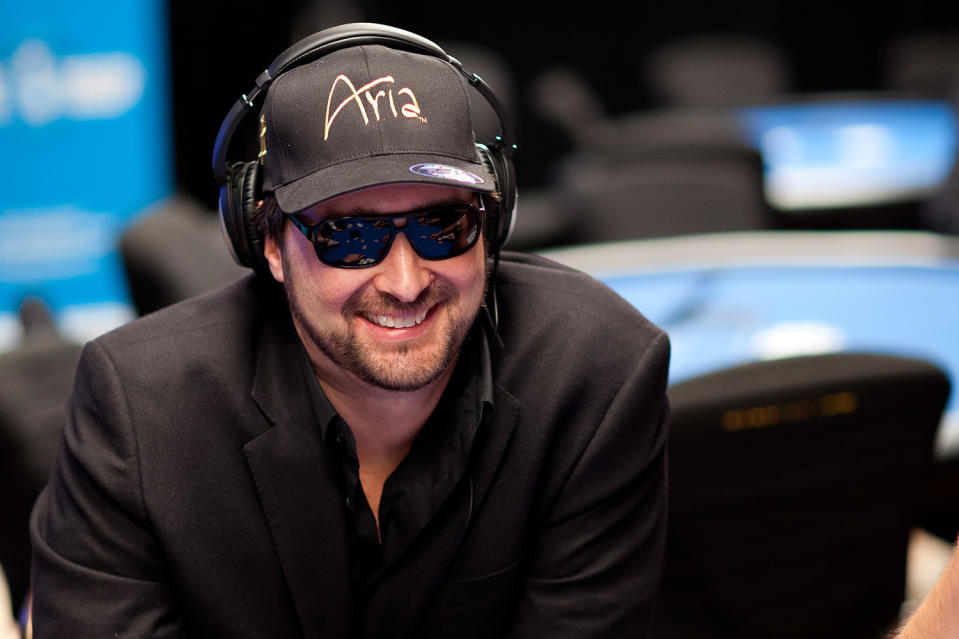Five tips so you can auction draft like a fantasy champion

Headphones and sunglasses aren’t required to dominate a Fantasy Football auction (Getty)
You’ve probably figured it out by now, snake drafts are checkers and auction drafts are chess. If you want a different comparison, the limit vs. no-limit poker example will do. Here are five tips to make you a better auction drafter on Yahoo in 2018.
1. Get money off the table
Many of your early nominations should be the best players you don’t want. The sooner you can get your opponents stripped of leverage, the better. Keep in mind players you don’t want come under two headings — players you were opposed to before the entire auction started, and players who don’t make sense to your roster after you’ve started to assemble it. If you purchased Travis Kelce in the first wave, a Rob Gronkowski buy probably doesn’t make sense to your roster shape. Throw Gronk out for a buck and get out of the way.
[A case for why you should do an auction draft this season]
2. Vary your nomination style
Neophyte auction players will fall into exploitable patterns. Some owners will chase most of the players they nominate, while others will jump out of the way with any player they introduce. Try to mix up your style. You don’t want your opponents to get an easy read on you.
It’s also a good idea to nominate against the flow of an auction sometimes, keep your opponents off balance. Maybe you toss out a handcuff before a primary back, or a designer defense after a run of top-tier wideouts. There’s no rule that says the auction has to proceed in a linear fashion.
3. Try to buy when your opponents still have alternatives
The worst moment in any auction is when the entire room realizes there’s only one good thing left at a position (or in a tier of a position), and too much money on the table to fight over it. That’s when inflation kicks in — and two minutes later, someone wants to throw their laptop out the window.
It’s not always the easiest thing to recognize, but the key is to try to make your purchases when your opponents still have options. If your rivals can imagine reasonable alternatives still left in the pool, it makes it easier for them to allow you to win the current player without a prolonged wrestling match.
4. Know when to let a reasonable buy go
A heady basketball defender recognizes that not every shot needs to be contested or maximum defended. Sometimes the opponent has an uncontested layup and it’s better to let the basket go, lest you commit a cheap foul and put yourself into an even worse position.
Why would you let your opponent get a solid purchase? Maybe the price makes sense in a vacuum but it’s actually going to cripple that owner’s budget going forward. Perhaps the player doesn’t fit the shape of your opponent’s roster; maybe the bid was a defensive bid that wasn’t intended to be a winning one. And sometimes letting a reasonable purchase go by will set you up to get a similar price on someone later; it’s a retraining of the room.
You won’t always have time for deep thinking in an auction — they tend to move at a blistering pace — but always be asking yourself, “what would winning this bid do to my opponent’s roster?” Maybe he’s winning the battle but losing the war.
5. Get to key numbers in the endgame
The first thing I try to remember before the endgame commences is to not get stuck on $1 players if possible. This singleton area might not be so terrible if most of the room is also joining you — many auctions morph into a de-facto draft at the end — but generally I want some say in what my final players look like, and with that I try to keep some slush money available for the final names.
(The burden of nomination can be brutal if you’re in dollar days while most of your opponents have extra cash. Toss out a lousy player, and you’re stuck with him. Mention a good player and the bids fly in, trumping your singleton. And then you have to wait for another full round. Unless your roster assembled is a juggernaut, it’s a lousy feeling.)
When the endgame is upon you, take a moment to recognize the maximum bids of everyone else in the room (and if you have a break or extra time, also consider what positions they need to fill). Many times in the endgame, the first person to shout out (or key in) “two” or “three” gets a player of consequence. It’s critical at this juncture that you are locked into the nominations and ready with a quick response, as needed.
[Yahoo Fantasy Football leagues are open: Sign up now for free!]
Three bonus thoughts I wanted to leave you with before we close this auction discussion.
— If the room is filled with new auction players, usually the early spending is crazy and the bargains are plentiful later. In experienced rooms, it’s generally the opposite; the early wave is commonly the best time to buy.
— If you have to overpay for someone, make sure it’s for someone you want or something you really need. Nothing is more soul crushing than spending your surplus on a mediocre midgame player simply because there’s no one else to blow it on.
— I don’t get hung up on exact prices and a specific, exact cheat sheet. Every draft is obviously contextual, and any auction is its own collection of ebbs and flows. As with most fantasy strategies, being flexible and open-minded is to your advantage.

 Yahoo Sports
Yahoo Sports 


